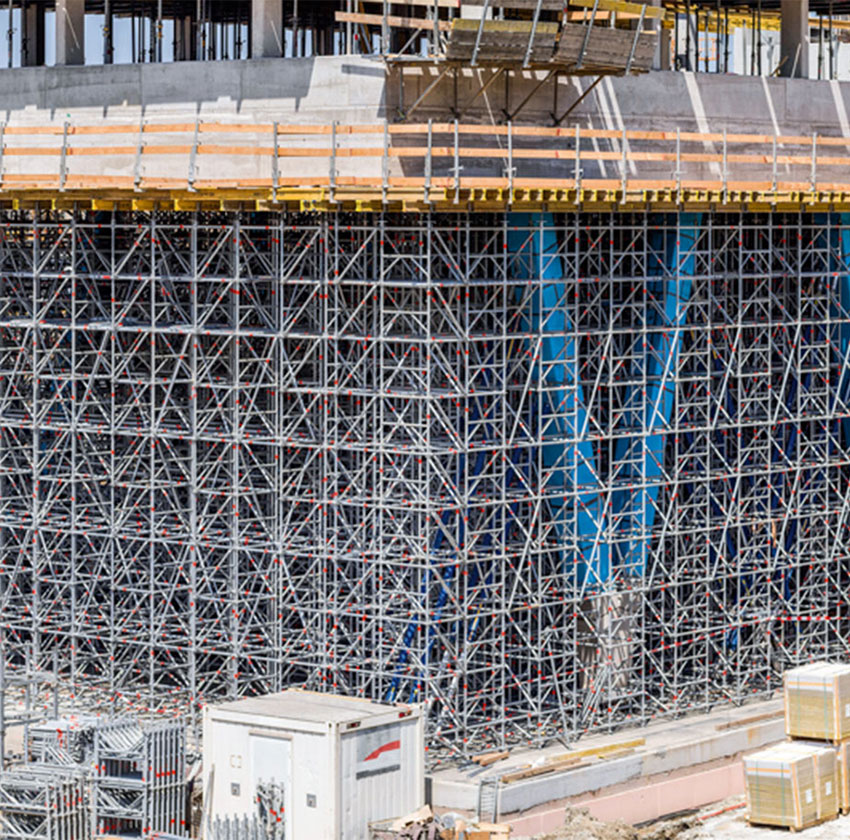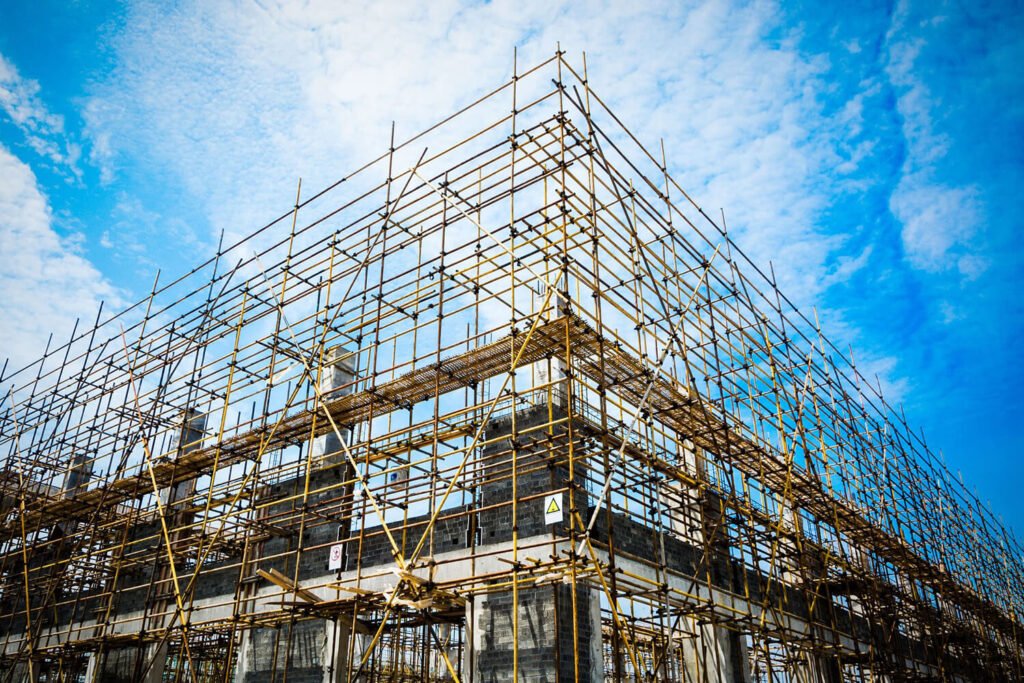Professional Scaffolder Surrey: Your Trusted Partner for Safe Installations
Professional Scaffolder Surrey: Your Trusted Partner for Safe Installations
Blog Article
A Comprehensive Overview to the Essential Features of Scaffolding in Modern Construction
The landscape of modern construction significantly counts on effective scaffolding systems that focus on security, performance, and advancement. As projects expand in intricacy, understanding the necessary attributes of scaffolding comes to be critical for ensuring worker safety and maximizing job timelines. This overview explores various sorts of scaffolding, highlights vital security features, and takes a look at product advancements that add to performance and sustainability. The implications of these components extend much past mere building methods, motivating a more detailed look at exactly how they influence total project success and employee well-being.
Sorts Of Scaffolding
Although scaffolding systems can differ extensively in style and application, they usually drop into several distinctive classifications that deal with various construction requirements - Scaffolding. One of the most typical kinds consist of supported scaffolding, suspended scaffolding, and rolling scaffolding
Sustained scaffolding consists of platforms sustained by a framework of poles, which offer a steady and raised functioning surface. This kind is typically used for tasks that need significant altitude, such as bricklaying or external paint.
Put on hold scaffolding, conversely, is made use of for jobs calling for accessibility to high altitudes, such as cleansing or fixing structure facades. This system hangs from another framework or a roof, allowing employees to reduced or raise the system as needed.
Rolling scaffolding functions wheels that enable simple mobility across a task site. It is especially useful for jobs that need constant moving, such as interior operate in large areas.
Each sort of scaffolding is created with certain applications in mind, making certain that building projects can be performed efficiently and successfully. Understanding these groups is important for picking the proper scaffolding system to satisfy both task demands and website conditions.
Trick Security Attributes
Safety and security is critical in scaffolding systems, as the prospective dangers related to operating at elevations can bring about major crashes otherwise effectively taken care of. Key safety and security features are necessary to ensure the wellness of employees and the honesty of the building website.
Primarily, guardrails are crucial. These obstacles provide a physical safeguard against drops, significantly reducing the threat of serious injuries. In addition, toe boards are frequently used to stop tools and materials from falling off the scaffold, shielding workers below.
One more important component is using non-slip surfaces on platforms. This feature enhances grasp, specifically in damaging weather, thereby lessening the likelihood of falls and slides. Additionally, gain access to ladders need to be securely placed to promote risk-free entrance and exit from the scaffold.
Regular inspections and upkeep of scaffolding systems are also crucial. These evaluations guarantee that all elements remain in excellent condition and working correctly, resolving any kind of wear or damages immediately.
Lastly, correct training for all workers entailed in scaffolding procedures is necessary to ensure that they comprehend safety and security procedures and can recognize prospective threats. Scaffolding. Jointly, these features develop a much safer working setting and substantially reduce risks connected with scaffolding
Product Advancements
Developments in product science have substantially affected the scaffolding industry, boosting both security and performance in modern construction. The intro of high-strength steel and aluminum alloys has actually changed standard scaffolding systems. These materials are not just lighter, making them less complicated to carry and set up, yet also give exceptional load-bearing capacities. This leads to scaffolding frameworks that can sustain higher weights while decreasing the risk of collapse.
Furthermore, innovative composite products, such as fiberglass-reinforced plastics, have emerged as viable choices. These materials are resistant to rust and ecological degradation, thus extending the lifespan of scaffolding systems, especially in harsh weather condition conditions. The use of such materials contributes to reduce maintenance costs and ensures regular performance with time.


Layout Considerations
Considering the complexities of contemporary building and construction jobs, effective scaffolding layout is critical to making certain both capability and security. Style considerations have to include numerous factors, consisting of load capability, height, and the specific needs of the building site. Each task provides one-of-a-kind challenges, demanding an adaptable method to scaffolding systems that can adapt to varying conditions.
Structural honesty is important; as a result, engineers need to calculate the lots that the scaffolding will sustain, including employees, materials, and equipment. The choice of materials plays a critical duty in guaranteeing the scaffolding can hold up against these loads while continuing to be light-weight and durable. Furthermore, the layout must permit easy gain access to and egress, helping with the smooth motion of products and personnel.
Security functions, such as guardrails and non-slip surface areas, must be incorporated to lessen risks of mishaps. The format needs to think about the surrounding setting, including nearby structures and possible dangers. By resolving these design factors to consider, construction firms can improve the performance of scaffolding systems and promote a more secure working atmosphere, ultimately contributing to the general success of the job.
Maintenance and Inspections
The performance of scaffolding systems extends past preliminary design and execution; recurring upkeep and normal assessments are scaffolding solutions crucial to guaranteeing their continued efficiency and navigate to this website security throughout the period of a project. Regular inspections need to be carried out by certified personnel to determine any type of signs of wear, damage, or instability that could jeopardize the honesty of the scaffolding.
Maintenance methods ought to consist of routine checks of structural elements, such as slabs, installations, and frameworks, ensuring that all elements remain protected and cost-free from deterioration or various other wear and tear. In addition, the capability of safety functions, such as guardrails and toe boards, should be assessed to make sure compliance with safety policies.
Documentation of all assessments and upkeep activities is critical for liability and regulatory compliance. A methodical method to record-keeping not only aids in tracking the problem of the scaffolding however likewise provides necessary evidence in the occasion of an incident.
Ultimately, developing a detailed maintenance and evaluation routine will significantly reduce the danger of mishaps and boost the general security of the construction website. By prioritizing these techniques, building supervisors can protect employees and copyright the project's integrity.

Final Thought
Finally, the important functions of scaffolding in modern-day construction encompass a variety of essential components, consisting of diverse kinds, vital security mechanisms, material advancements, and thoughtful style considerations. Highlighting security through guardrails and non-slip surfaces, alongside advancements in materials like high-strength steel, enhances both efficiency and sustainability. Regular maintenance and evaluations are essential for making sure architectural integrity and safety on building additional info and construction sites, inevitably promoting effective task execution and advertising the well-being of employees.
The landscape of modern building significantly counts on efficient scaffolding systems that prioritize safety, effectiveness, and advancement.Innovations in material science have substantially affected the scaffolding sector, enhancing both safety and effectiveness in contemporary building and construction. Overall, these material developments not only improve the efficiency and safety and security of scaffolding systems yet also align with the industry's push towards sustainability, as many modern materials are developed to be much more ecologically friendly.
Thinking about the complexities of contemporary building projects, effective scaffolding design is critical to guaranteeing both performance and safety.In final thought, the necessary functions of scaffolding in contemporary building include a range of vital aspects, including varied kinds, crucial security mechanisms, product technologies, and thoughtful style considerations.
Report this page